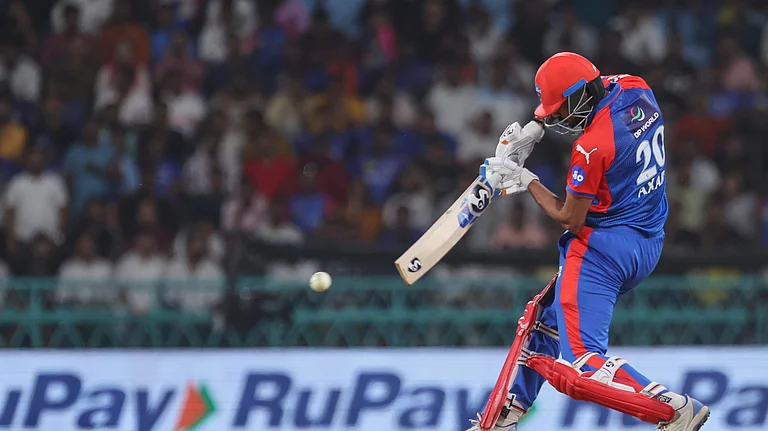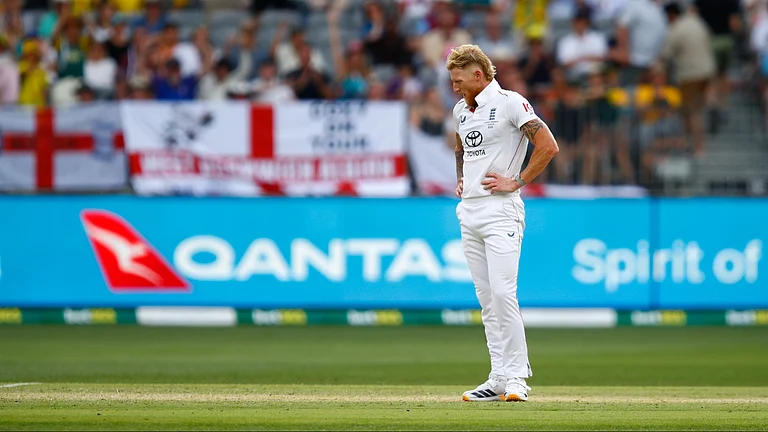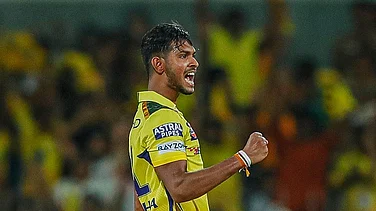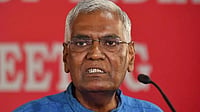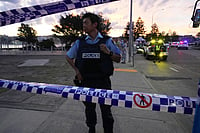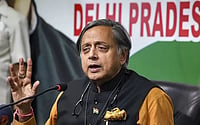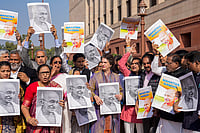ABOUT the only Canadian bats-man who did not let the sudden impact of the big league intimidate him during the second Prudential World Cup in 1979—the unfancied country’s only appearance in the event to date—was of Caribbean descent. In Canada’s group match against the formidable Australians, opener Glenroy Sealy launched a brutal assault on Rodney Hogg, carting the speedster away to the fence four times in a row in his first over and then, to add insult to injury, following it up with 10 more quick runs in his next; and the rank underdogs galloped away to an incredible 33 for no loss in just three overs. Shades of Sanath Jayasuriya years before the world was to hear of the Matara Marauder! The Sealy blitzkrieg, of course, was too good to last. It didn’t; Alan Hurst ran through the brittle batting lineup in next to no time. But Sealy had hooked and punched his way into the record books—and into Canadian cricket folklore.
The importance of being Glenroy Sealy had another, perhaps more important, facet: he was a bit of a rarity in Canada’s 1979 World Cup squad because that bunch of committed, if outclassed, cricketers was predominantly white. Talented wicketkeeper Bryan Mauricette was the skipper, standing in for an injured Garnett Brisbane; John Vaughan was the main strike bowler; and Chris Chappell, no relation of the fabled Australian cricketing clan, was a key member of the team’s core.
That was nearly two decades ago. Today, as Canada battles the cricket-playing Caribbean islands for honours in the ongoing Shell-Sandals limited-overs competition in Jamaica and prepares for the ICC Trophy tournament to be held in Kuala Lumpur next March, the ‘colour’ of Canada’s cricket team has changed dramatically. As many as eight players in the 14-member squad are of Indian origin, while two, Brian Rajadurai and Nigel Isaac, are Sri Lankan. Says Allahabadi-turned-Torontonian cricket enthusiast Ahmad Saidullah, former editor of The Canadian Cricketer: "West Indians are still the dominant cricket-playing community in Canada, but that is changing gradually as immigrants from the Indian subcontinent are increasingly making their mark nationally and internationally." The immigrants arrived in waves: the Caribbeans from the isles around the north American continent in the ’50s and ’60s, Indians from Idi Amin’s inhospitable Uganda in the ’70s and Tamils fleeing the civil strife in Sri Lanka in the ’80s and ’90s. Cricket has now brought the deracinated lot together.
Canada’s captain Ingleton Liburd, a lefthanded opening bat and useful right arm medium-pacer who took over the reins from Danny Singh, was born in St Kitts. Don Maxwell, an aggressive middle-order batsman who migrated to Canada in the mid-’80s, is a Barbadian. And Desmond Chumney, an allrounder who bats high up in the order, is Guyanese. But virtually all the other current members of the Canadian cricket team, which has traditionally been dominated by players from Toronto, Ontario, are of South Asian extraction. Cricket is more than a mere game in the Indian subcontinent. The passion goes wherever the community does.
Veteran Canadian right-handed batsman Paul Prashad, who made his international bow in the 1986 ICC Trophy with knocks of 164 against Papua New Guinea, 120 against Israel and 129 against Fiji, is a Guyanese of Indian descent. As, naturally, are his elder sibling Martin Prashad and his nephew Latchman Bhamsi-ngh, who is Liburd’s partner at the top of the Canadian batting order. The lefthanded Bhamsingh, who played a stellar role in Canada’s historic five-run victory over the US in the sesquicentennial Karl Auty Trophy match at Marine Park, Brooklyn, in September 1994 with scores of 41 and 96, is the team’s vice-captain. Both Paul and Martin Prashad have represented Canada in the last three ICC Trophy competitions.
The team’s wicketkeeper Surendra Seeraj and right-arm off-spinner Derick Etwaroo, too, are the progeny of Caribbean-Indian immigrants from Guyana. Among the other ‘Indians’ who are expected to play prominent roles in the crucial matches ahead, some of which will determine whether Canada will figure in the 1999 World Cup in England, are Sukhjinder Rana, a left-arm opening bowler who made an impressive international debut in the 1994 Auty Trophy tie with match figures of seven for 56, and left-arm orthodox spinner Barry Seebaran, who is the only player from Vancouver, British Columbia, in the national team. Seebaran’s father, Ben, a Caribbean Indian immigrant who married a white Canadian, is an official of the Canadian Cricket Association (CCA). The spinner missed the Atlantic Cup matches against Barbados, Bermuda and the US in April because of a back strain. He is, therefore, itching to make up for lost time.
Says Ali Abbas Hasanie, CCA’s first vice-president: "In central and eastern Canada (Ontario, Quebec, Manitoba) cricket is played primarily by immigrants—Caribbeans, Indians, Pakistanis and Sri Lankans. But in British Columbia, white Canadians dominate the sport."
The present Canadian team, Hasanie points out, has only two white players but that has nothing to do with the fact that the CCA is dominated by Caribbean and South Asian immigrants. "The team is made up essentially of boys born in the country," he points out. "First generation immigrants are kept out. Selection is done strictly on merit and the colour of one’s skin is unimportant."
One clear exception to Hasanie’s ‘born in Canada’ rider is Brian Rajadurai, a leg-spinner and solid right-handed batsman who toured England with the Sri Lankan team in 1988. He moved to Canada in 1991 to play for the 98-year-old Grace Church Club in the Toronto & District (T&D) premier league and went on to lead the team to its sixth Continental Cup title in 1995. He is now a key member of the Canadian team.
Another recent Sri Lankan import, Sanjay Thursaisingam, far and away Canada’s fastest bowler, has been left out in the cold for the time being because, when the next ICC Trophy tournament is played next March, he will still be two months shy of attaining the right to represent Canada in the World Cup qualifiers. Says a CCA functionary: "As Thursaisingam can’t play for Canada until after the next ICC Trophy, the selectors have opted to groom a bowler who can." But given the Sri Lankan pace-man’s consistent showing in the T&D premier league, he is almost certain to break into the Canadian team.
AMONG the future stars of Canadian cricket are two flamboyant 16-year-olds from South Asia: Derek Perera, a Sri Lankan Canadian allrounder who was in England recently for the Lombard’s Under-15 World Cup, and Zubin Surkari, a Parsi immigrant’s son whom former Canadian cricketer Chris Chappell describes as "a phenomenal fielder". While Per-era is all set to leave for England for a training programme before spending six months in Queensland, Australia, Surkari’s father, a member of the Toronto Cricket Club, will be taking the lad to India this season to enable him to play there.
While the likes of Hasanie are satisfied with the talent available in the country and the way it is being nurtured, more hard-nosed observers like Chappell, who heads the cricket committee at the predominantly White Toronto Cricket, Skating and Curling Club, are sceptical about Canada’s chances in the coming 22-nation ICC Trophy competition. "We have miles to go before we can exude any kind of confi-dence about our chances at the highest level of the game," says Chappell.
Says Chandra Rampersaud, former junior Guyana cricketer and now Toronto correspondent of The Guyana Times: "There is no dearth of genuine talent in Canada. What we lack is mental toughness because of the paucity of world class competition. Cricket, after all, is played as much in the mind as on the field." But Paul Prashad, a battle-scarred cricketer who is expected to lead Canada’s charge in Group C (Holland, Namibia, Fiji and Eastern and central Africa) at the 1997 ICC Trophy, is confident that the present team can pull it off: "We can do it. In fact, we have do it because that would be a big boost for Canadian cricket. It would lead to a revival of popular interest in the game and, in turn, to more playing time on television and greater private sponsorship."
And that will be the South Asian diaspora’s gift to cricket in a part of the globe where the gentleman’s game and India have been virtually inseparable for the past few decades.







